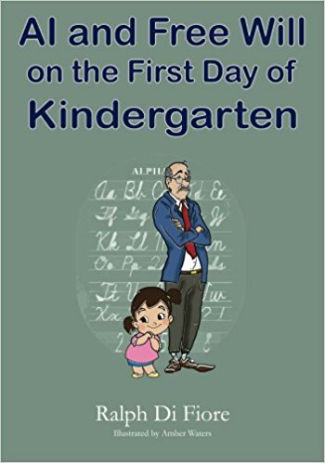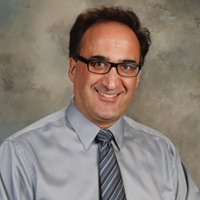Kurt Godel and the Beauty of Incompleteness
By Ralph Difiore

Kurt Godel, logician extraordinaire and mathematical genius, stunned the world of mathematics with his brilliant incompleteness theorems in 1931. Although not a household known outside of mathematics, Godel’s incompleteness theorems are regarded as being part of the trifecta of monumental intellectual accomplishments in the 20th century. These include Einstein’s theory of relativity and Heisenberg’s uncertainty principle.
Einstein in fact was a close friend of Godel while the two of them worked at the Princeton Institute of Advanced Study. Einstein famously said, “My only usefulness now is in my daily walks home with Godel.” They were both intellectual giants and enjoyed their daily chats. Viciously attacked by those who either didn’t understand his theorems or were jealous of his accomplishments, Godel was driven into intellectual isolation and eventual madness. A sad fate for such a brilliant mind.
In the mid 1930s, he suffered a series of mental breakdowns and spent some significant time in a sanatorium. Nevertheless, he threw himself into the same problem that had destroyed the mental well-being of Georg Cantor during the previous century, the reasonableness of the continuum hypothesis. In fact, Godel made an important step in the resolution of that notoriously difficult problem which featured the relationship between Integers such as 1, 2, 3, 4 and Real Numbers such as 1.23 2.34 etc. Cantor claimed that his ideas implied the existence of an “infinity of infinites” in the mathematical realm, an insight he claimed given to him by God. Well, the world of science would have none of this and Cantor was thrown into a form of mental illness in the face of such hositility.
The implications of Cantor’s work had profound philosophical implications and here was Godel upholding this theory who would also suffer a gradual deterioration in his mental and physical health.
Princeton and Einstein
He was only kept afloat at all by the love of his life, Adele Numbursky. Together, they witnessed the virtual destruction of the German and Austrian mathematics community by the Nazi regime. Eventually, along with many other eminent European mathematicians and scholars, Godel fled the Nazis to the safety of Princeton in the USA, where he became a close friend of fellow exile Albert Einstein.
Princeton’s Institute for Advanced Study was completely devoted to the exercise of pure thought without the burden of teaching. The burden of publication would remain however.
But, even in the USA, he was not able to escape his “demons,” and was dogged by depression and paranoia, suffering several more nervous breakdowns. Eventually, he would only eat food that had been tested by his wife Adele, and, when Adele herself was hospitalized in 1977, Gödel simply refused to eat and starved himself to death.
To understand the import of the incompleteness theorems and the intellectual blow they dealt mathematics, one has to understand what the mathematical world had been trying to accomplish for almost a century. The great German mathematician David Hilbert (1862-1943) was recognized as one of the most influential and universal math theorists of the 19th and early 20th centuries. Hilbert discovered and developed a broad range of fundamental ideas in many areas, including invariant theory and the axiomatization of geometry. He also formulated the theory of Hilbert spaces, one of the foundations of functional analysis.
Hilbert’s vision of developing a rigorous formal mathematical reasoning process that encapsulated the world of mathematics gripped that esoteric community. This seemed a natural enough vision and entirely logical. Math by its very nature employs formal methods in establishing its theorems so grand over-arching theorems that would capture the world of mathematics seemed a logical pursuit.
A mark of genius
It might be said at this point that the mark of genius is being able to see what others cannot. This definition would certainly apply to Godel. While the mathematical community worked vigorously on achieving Hilbert’s vision, it was Godel’s insight that showed it couldn’t be accomplished.
Put simply, the incompleteness theorems – surely a mathematician’s worst nightmare – proved that any system of logic or numbers that mathematicians ever come up with will always rest on at least a few unprovable assumptions. His conclusions also imply that not all mathematical questions are even computable, and that it is impossible, even in principle, to create a machine or computer that will be able to do all that a human mind can do.
This led to a crisis in the mathematical community, raising the spectre of a problem which may turn out to be true but is still unprovable, something which had not been considered in the whole two millennia plus history of mathematics. Godel effectively refuted, in a stroke, the ambitions of mathematicians such as Bertrand Russell and David Hilbert who sought to find a complete and consistent set of axioms for all of mathematics.
In short, Godel theorems demonstrated in an iron clad and rigorous methodology that formal attempts to capture mathematical finality are doomed to failure (as, for example, with the problem of real numbers). The mathematical landscape is strewn with truths that cannot be “captured” and are paradoxical in nature. They have to start with assumptions and the inability of a formal system to capture them does in no way negate that they are mathematically true. This strikes at and cautions against an overhelming certitude that the mathematical world wanted.
Sadly, the philosophical implications of Godel’s incompleteness theorems were ignored or not grasped. This isn’t entirely a mystery. The 20th century ushered in a wave of atheism in many scientific circles. Many felt they had shed the shackles of religion and were now free rationalists who could solve and explain all phenomena in purely rational ways.
The peerless intellectual giant John Von Newman, however, immediately grasped the significance of Godel’s theorems after their presentation in 1932. In fact, Von Newman even pointed out significances that even Godel himself did not see.

Mind over Machine?
Von Neuman believed the mind is uniformly better formed than the purported mechanist representation of it but it operates in a very different manner. Godel’s theorems had effectively refuted any future mechanistic thesis of the mind. How so? Envision the following scenario: a mechanist formulates a particular mechanistic thesis by claiming, for example, that the human mind is a Turing machine (an early computer) with a given formal specification . This machine produces Gödel’s ‘S’ sentence, which we can see is true, but the Turing machine cannot. Then, a mechanist puts forth a different thesis by claiming, for example, that the human mind is a Turing machine with formal specification ‘S’.
The ‘S’sentence model shows that a sentence independent of a proven theory will have models in which the sentence is true and models in which it may not be true, e.g. the statement “grass is green.” The computer cannot get beyond this whereas the humn mind can see other possibilites. The logical conclusion is that the widely influential Computational Theory of Mind is false. The humn mind can see in which model the sentence is true and in which model the sentence is false. Likewise, the strong hope for artificial intelligence in our time is false; it is impossible to construct a machine that can perfectly imitate the total of our cognitive abilities.
One can clearly see why Godel encountered so much criticism and resistance. What he was indirectly supporting was none other than the age old religious belief in a non-material component animating us as human beings. Materialists would love to believe that our minds are mere computational devices that can be replicated with complex algorithms. They are bothered by something non-material animating humans. Their best attempt at a solution, an explanation, is to take only one component of the human mind, computation, and make that the basis for the complete explanation to the human mind.
Many are seeing that this conclusion is false and unprovable. The true conclusion one should draw from Godel’s stunningly brilliant theorems is that the human mind is far greater than any computational machine and that it transcends our material world and indeed rightly belongs to the domain of the transcendent. That is an awesome and inspiring conclusion that should give us great comfort in the daily lives of those who reach out to an invisible God (Hebrews 11:27).
Godel, Einstein and Time
Having already rocked the mathematical world with his incompleteness theorems, Godel next set his target on Einstein’s theory of relativity. He announced that he had discovered new cosmological solutions to the field equations of general relativity, solutions so radical that they would do to the concept of time what his incompleteness theorems did to mathematics.
In the new “cosmological solutions” put forth by Godel, the Godel rotating universe shows that the space-time structure of Einstein is so greatly warped and curved by the distribution of matter that time does not “flow” as we intuitively grasp it. Time is not just relative it is static. One implication is that space-time can be opened up along future-directed paths. Godel being the perfectionist that he was, worked out the exact speed and fuel requirements for an imaginary spacehip penetrating into any region of the past, present or future.
Rod Serling and Captain Kirk could not have asked for anything more! Godel demonstrated, by following the logic of relativity further than Einstein had that the results will not just illuminate but eliminate the reality of time. It took Godel a mere six pages to dispatch his intuitive grasp of time.
Godel then proceeded in logical fashion to show that if we can revisit the past, it never “passes” at all. Einstein immediately saw that if Godel was right, and Einstein could not disprove Godel, then he had completely obliterated the intuitive concept of time, i.e. time ceaselessly flowing forward. Time, what we intuitively think of as a passing phenomenon, is actually the world’s greatest illusion. The great magicians of past and present paled into insignificance against the greatest illusion of all time (pardon the pun), time itself.
Hawking and Godel
The scientific community once again reacted against Godel and still do. Even the great Steven Hawking found Godel’s conclusion so disturbing that he created ad hoc modifications to the laws of nature that would have the effect of ruling out the Godel universe as a genuine theoretical possibility. He went so far as to create anti-Godel postulates.
 Ralph Difiore
Ralph DifioreIronically, Hawking’s desperate attempt at refutation with his anti-Godel postulates have in turn been rejected by the cosmological community.
What is the conclusion one can draw from the scientific community’s reaction to Godel? Is it that the world was not yet ready for Godel’s conclusions? Are we finally approaching the moment when Godel’s brilliant discoveries can be accepted when a discredited prophet will be viewed as a prophet with honor?
Time will tell.
(Ralph Difiore is principal of a private College in Toronto. His book on “AI and Free Will” is available at Amazon. His e-mail for further questions is rdifiore@royalcrowncollege.com.)